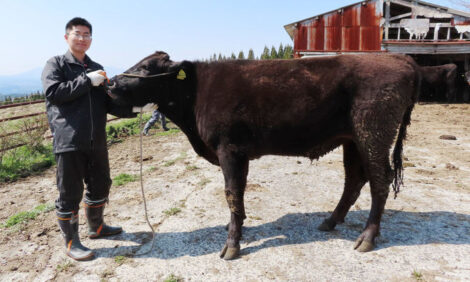



Capitalise on Drought Culling With Shorter Calving
ANALYSIS - A call has gone out to Kansas ranchers to tighten up calving periods as a means of benefiting from drought culling.Sandy Johnson, a livestock reproduction expert at Kansas State University, has urged farmers to scrutinise postpartum intervals in order to reduce calving season length.
Reports coming into Kansas State Extension show that, in some cases, culling has been needed and has shortened calving, a ‘tremendous opportunity’ in the eyes of Dr Johnson.
Dr Johnson said research shows calves born in the first 21 days of calving are bigger, but she added that herd healthcare becomes easier too.
“Timing of vaccinations and diet changes based on stage of production are optimal for more cows when the calving season is short,” said Dr Johnson.
“Less variation in calf age also results in more uniform calves at weaning.”
Heifers are very different animals to mature cows however, and best advice is to give heifers a two to three week head start.
This can prevent nutritional demands of the heifer disrupting breeding schedules, which can be helped further by feeding for a body score of six.
“With the 283 gestation subtracted from the year, that gives 82 days for a cow to conceive to calve at the same point next year,” explained Dr Johnson.
“Literature estimates average calving and estrous cycle intervals are 50 days for mature cows and 70 days for heifers.”
She added that difficult pregnancies or cases of weight loss could result in longer intervals in two year olds – between 80 and 120 days.
As for bull exposure, a 60 day breeding season is sufficient to get 90 per cent pregnancy or more, added Dr Johnson.
If longer is needed, pregnancy diagnosis can be used to identify late bred cows.
“It will take discipline to follow through and market these cows if this approach is used," said Dr Johnson.
“In the absence of culling, a gradual approach to reducing breeding season length should be taken.”
Meanwhile, latest weather forecasts indicate further drought conditions for south west Kansas this summer. Drought monitor estimates reveal 85 per cent of Kansas is suffering 'marginal drought conditions'.
This was highlighted by Dr Derrell S Peel of Oklahoma State University who said Kansas had begun rebuilding with more cows in the state inventory.
He said: "It is producers in the marginal drought areas that must be prepared to move quickly to either act aggressively if conditions improve or to act defensively if drought conditions redevelop."
Michael Priestley
News Team - Editor
Mainly production and market stories on ruminants sector. Works closely with sustainability consultants at FAI Farms



